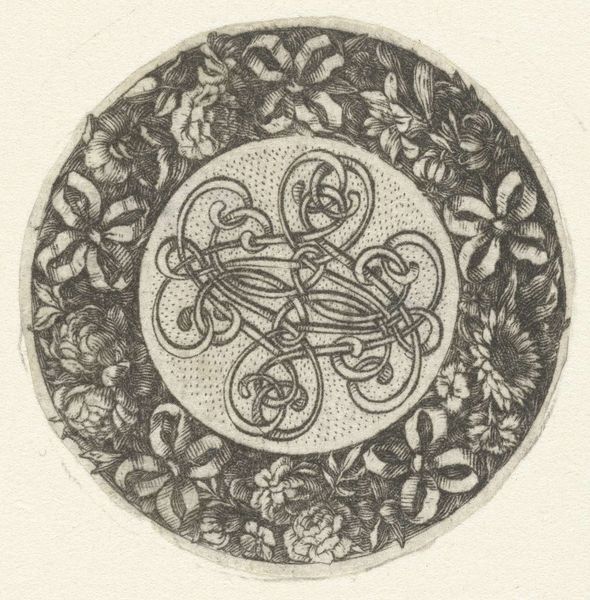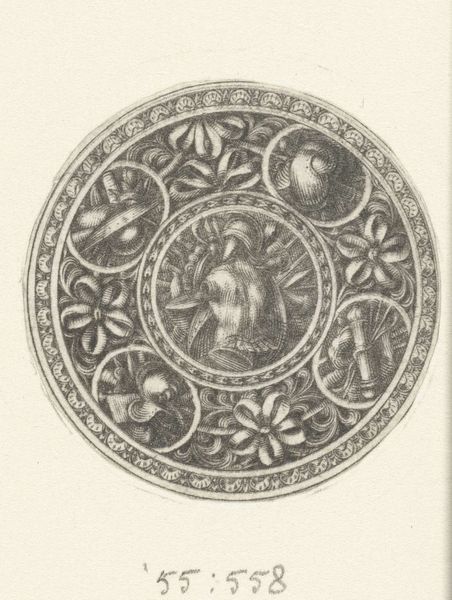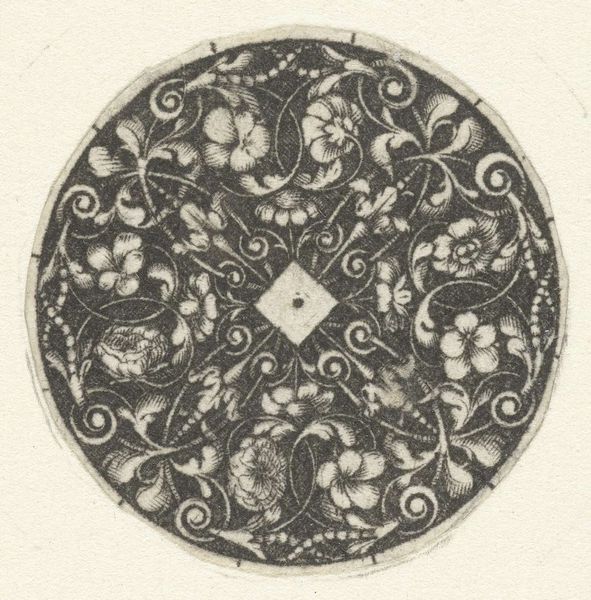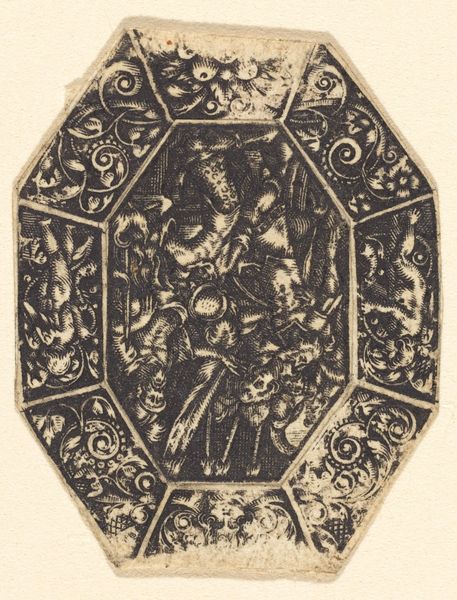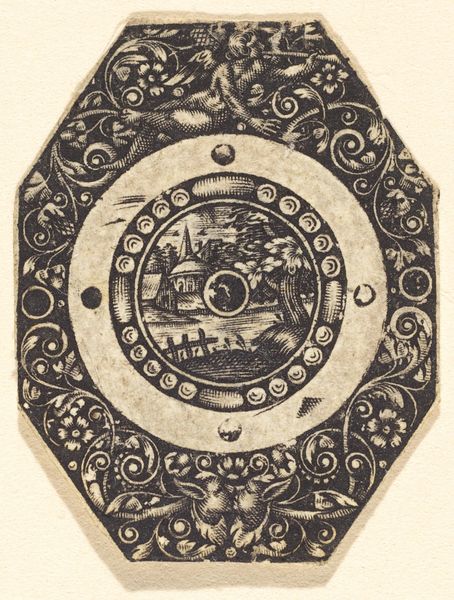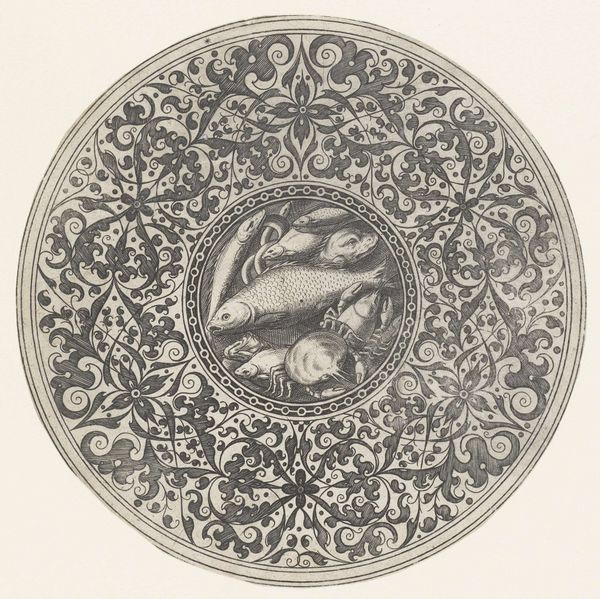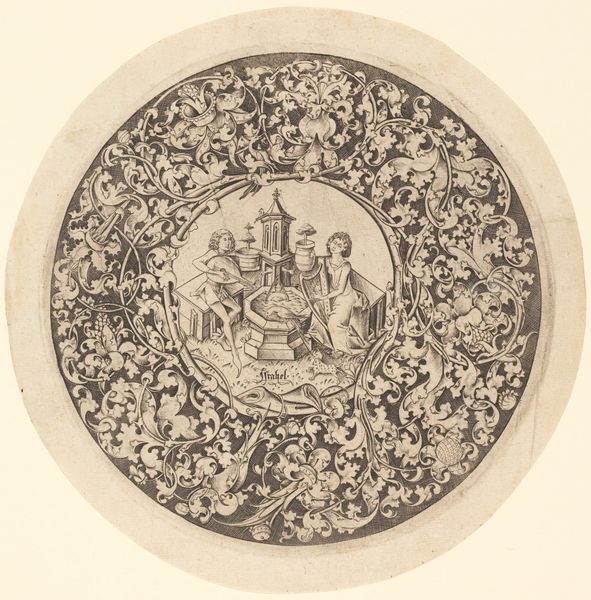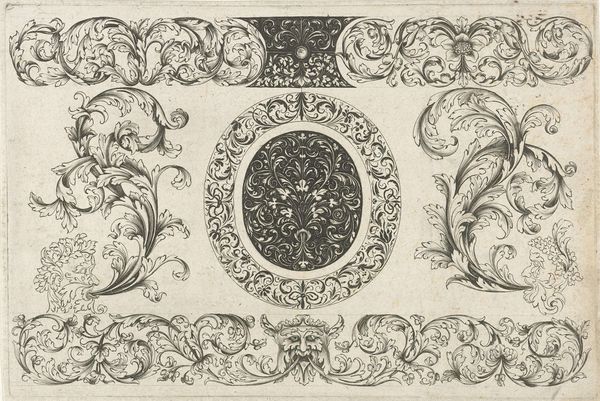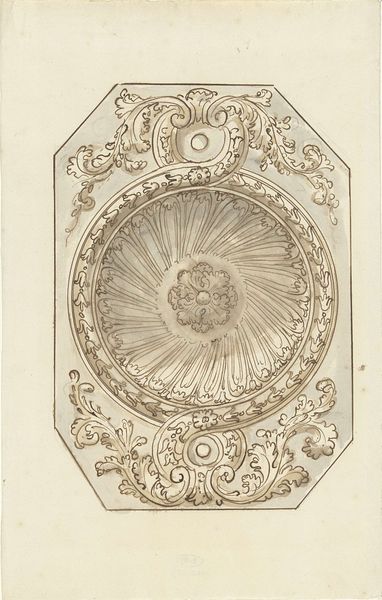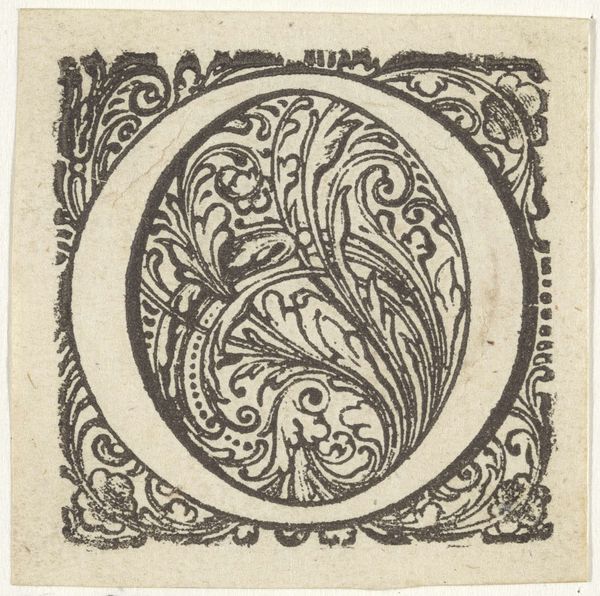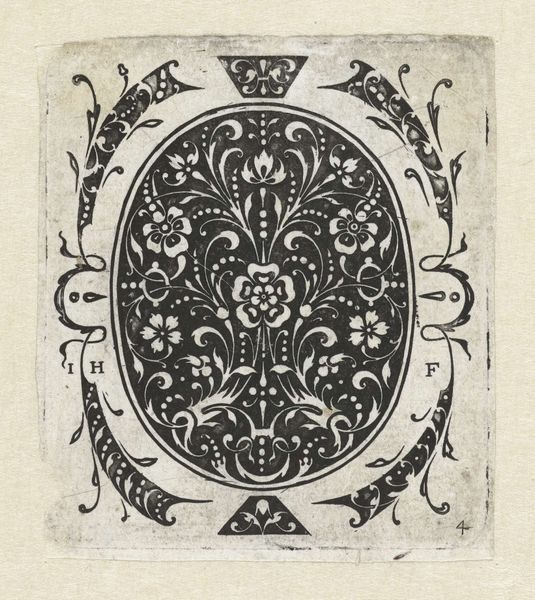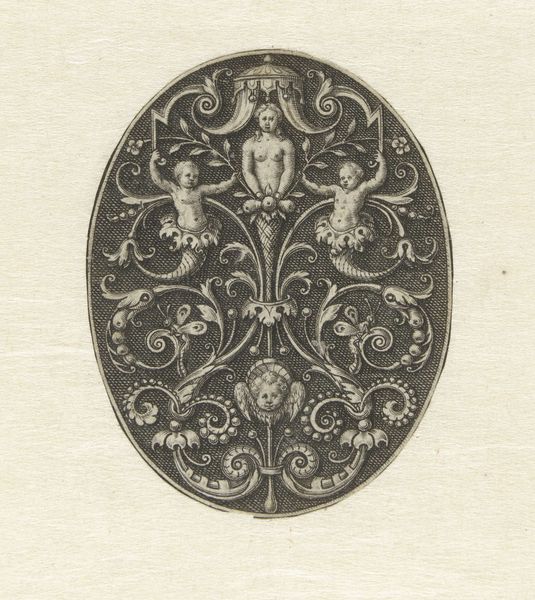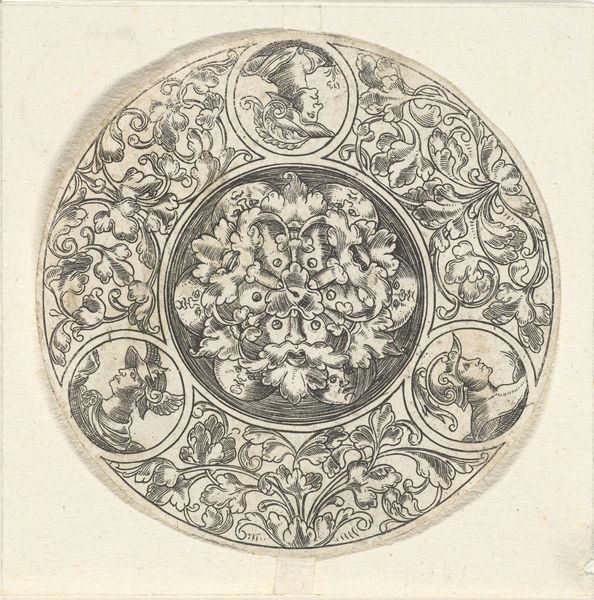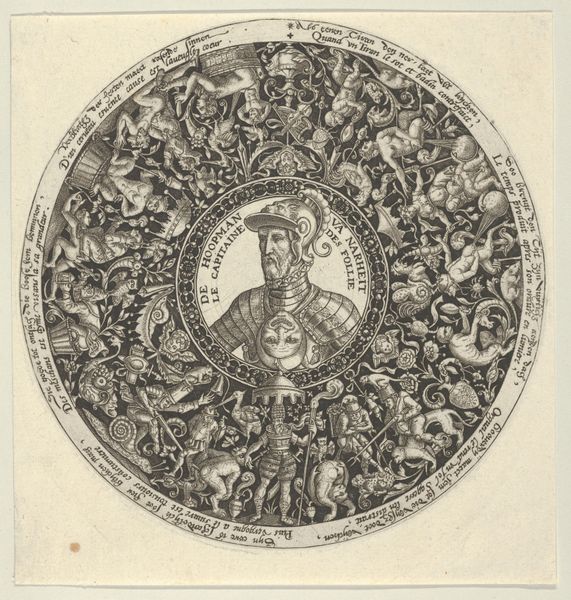
#
rippled sketch texture
#
pen drawing
#
shading to add clarity
#
old engraving style
#
ink line art
#
pen-ink sketch
#
limited contrast and shading
#
pen work
#
coloring book page
#
intricate and detailed
Copyright: Rijks Museum: Open Domain
Editor: Here we have a piece from the Rijksmuseum's collection: "Medaillon met bloemen, ranken en cherubijntjes," dating from 1631 to 1686 by Jacques Vauquer. It looks like an ink drawing, incredibly detailed. What do you see in this piece, considering the time it was made? Curator: Well, right away, the cherubs draw my attention. These aren't just decorative elements; they're powerful symbols linking the earthly to the divine, carrying a cultural memory that stretches back centuries. Their presence, interwoven with floral motifs, suggests a yearning for paradise, a theme prevalent in art of this period. Notice how they're positioned almost as guardians of this floral microcosm. Don't you think that their contemplative gazes give us a sense of serene watchfulness? Editor: Yes, they do. I hadn't considered the "paradise" connection so explicitly, but it makes perfect sense, especially with all the flowers and vines. Are there other symbols I might be missing? Curator: Absolutely. Consider the medallion shape itself. Medallions were often used to depict portraits of rulers or important figures, but here, we have nature and cherubs. The shift says something about the changing values perhaps - placing the celestial and the natural on par with earthly authority. Could it reflect a move towards personal piety or appreciation of nature? Editor: That's fascinating! I'm used to seeing those portraits you mentioned in that shape, so the cherubs are almost a rebellion, a sign of moving away from glorifying the elite. Curator: Precisely! It reminds us that even seemingly simple images can carry significant emotional and ideological weight, evolving across different periods and cultures. We can read art in new ways when we consider historical context and symbolic values attributed to imagery. Editor: I learned that what appears ornamental is loaded with cultural history! This discussion encouraged me to carefully inspect any image, no matter how simple it might appear, as a source of information!
Comments
No comments
Be the first to comment and join the conversation on the ultimate creative platform.
